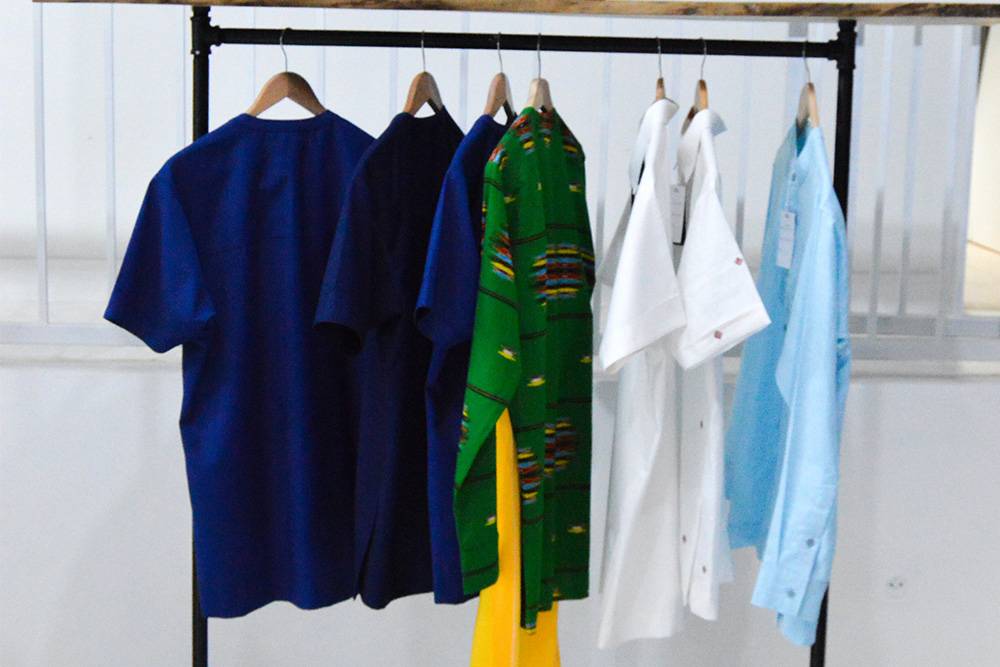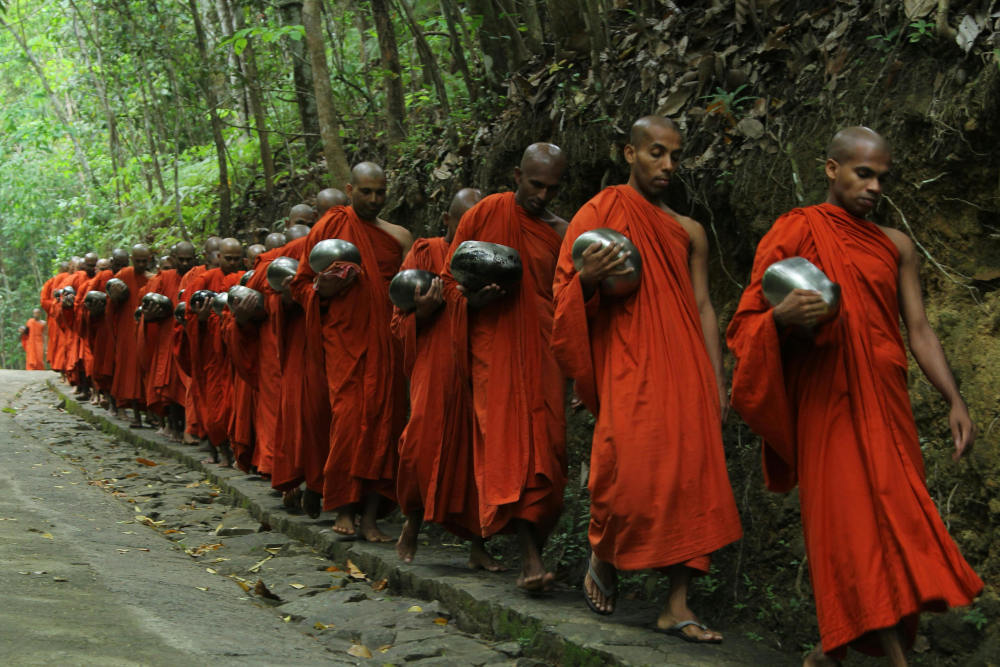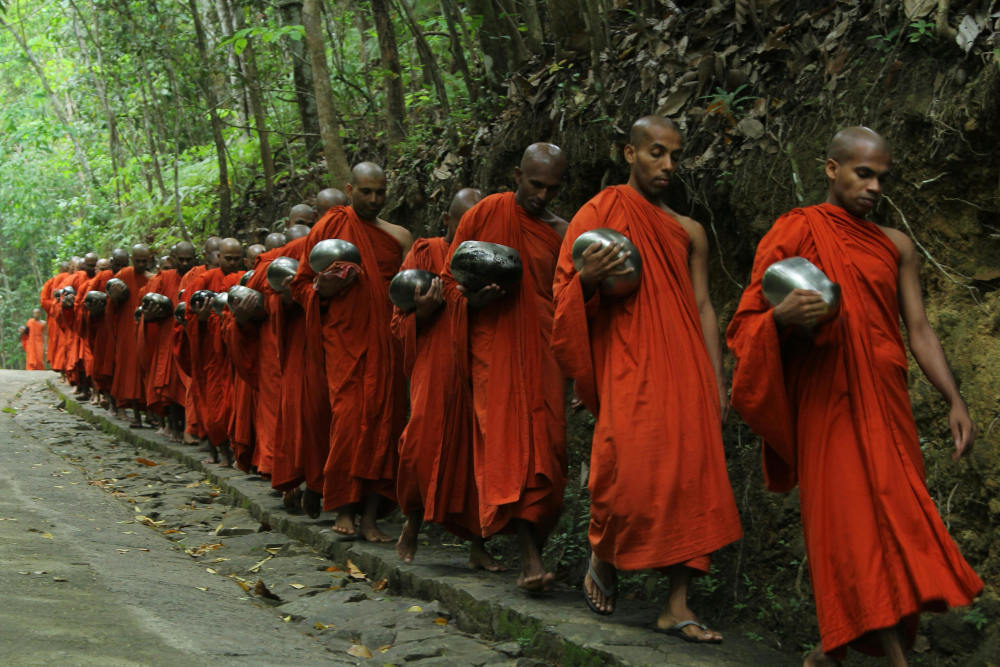
The most sustainable and cruelty-free fabrics are eco-friendly, vegan, and ethically made from organic or recycled fibers. They are also comfortable, lightweight, breathable, durable, and luxurious.
Choose vegan textiles that don't involve animal exploitation and are better for your skin and the planet. There are many eco-friendly and cruelty-free vegan options for beautiful fashion.
Fashion can be stylish, high-quality, affordable, and animal-free. No animal should suffer to make beautiful and functional clothes, shoes, or accessories. Animal exploitation has no place in modern society.
Thankfully, many conscious fashionistas prefer clothing not made from animals. They wear cruelty-free and eco-friendly garments made from these ethical and vegan fabrics.
Panaprium is independent and reader supported. If you buy something through our link, we may earn a commission. If you can, please support us on a monthly basis. It takes less than a minute to set up, and you will be making a big impact every single month. Thank you!
1. Organic cotton

Organic cotton is a fantastic cruelty-free fabric and one of the most popular for good reasons. It's ethical, sustainable, and environmentally friendly.
Organic cotton fabric protects the planet, people, and animals. It's so much better than conventional cotton because it's non-GMO and grown organically, without the use of hazardous herbicides, pesticides, or fertilizers.
Organic cotton clothes contain cotton fibers produced from a natural and renewable resource: cotton plants. Cotton is a natural, bio-based, and biodegradable fiber.
Organic cotton is also less likely to contribute to acidification and eutrophication of freshwater sources. It helps soil fertility and biodiversity.
By growing organic instead of conventional cotton, farmers can potentially save billions of liters of water and millions of kg of carbon dioxide.
Organic cotton is generally less harmful to the environment, human health, and ecosystems. Because cotton is one of the most common fibers used in the textile industry, it's crucial to grow it organically.
2. Recycled cotton

Recycled or upcycled cotton is a vegan fabric that reduces textile waste and the need for natural resources. Manufacturers make recycled cotton from post-consumer and post-industrial cotton waste.
Recycled cotton is a natural material made of cellulose fibers extracted from renewable resources, cotton waste, gathered from second-hand clothing, textile waste, or leftovers of cotton production.
Recycling converts waste into new materials. Textile recyclers break down waste fabric and scraps into new materials to create new fibers. It's an eco-friendly alternative to conventional waste disposal.
Cotton is an extremely resource intense crop. It requires tons of land, water, energy, labor, pesticides, and insecticides. Recycled cotton, however, demands much fewer resources to manufacture.
Recycled cotton minimizes the environmental impact of cotton production drastically. Recycling cotton can save a lot of fresh water and other scarce resources.
Recycled cotton has the same qualities as conventional cotton. It's lightweight, breathable, quick-drying, durable, very soft, and pleasant to the touch.
3. Linen

Linen is an ethical and vegan fabric that is also sustainable, breathable, soft, comfortable, luxurious, durable, quick-drying, moisture-wicking, lightweight, and antimicrobial.
Linen is popular in the textile and apparel industry to make environmentally friendly and cruelty-free clothing. It has been used for a very long time to make fabrics.
Linen is an old material, much more ancient than cotton. In history, linen cloth symbolized luxury, preciousness, and extravagance, used at dining tables in the Middle Age, a symbol of power to exhibit authority and wealth.
Linen is considered a luxurious fabric and a premium choice for high-end garments. It's a natural and vegan fabric, bio-based, biodegradable, and recyclable.
Linen comes from a renewable resource, the flax plant, and requires less water than cotton to grow. Europe produces the majority of flax fibers globally.
4. Hemp

Hemp is one of the best ethical, sustainable, and vegan fabrics. It's a great material to create comfortable textiles and beautiful fashion with fantastic qualities.
Hemp is natural, soft, breathable, lightweight, durable, hypoallergenic, antibacterial, and cruelty-free. It's an excellent choice to make high-quality and fashionable garments that protect animals and the environment.
Hemp is a natural and renewable resource. Hemp plants grow quicker and easier than most trees with less water, herbicides, pesticides, or chemical fertilizers.
They grow in temperate climates and are harvested annually with a very high yield. One acre of hemp can produce two to three times more fiber than an acre of cotton.
Hemp is one of the oldest textile fibers, used 10,000 years ago to make clothing. It's an excellent substitute for cotton and is much more environmentally friendly.
5. Ramie

Ramie is an ethical and vegan fabric revolutionizing the textile industry. It's natural, eco-friendly, cruelty-free, strong, durable, lightweight, and breathable.
Textile manufacturers make ramie fabric with natural fibers extracted from the Ramie plant. It's a very eco-friendly and sustainable fabric, great for the eco-conscious shopper.
Ramie originates from China, India, and Indonesia and is one of the oldest fiber crops. Farmers have used natural ramie fibers for thousands of years, mainly for fabric production and weaving clothing.
Ramie is used as a cotton substitute today. It's very versatile but isn't popular because it remains expensive due to labor costs during cultivation and production.
6. Lyocell

Lyocell is an ethical and vegan fabric made from cellulosic fibers. Other semi-synthetic cellulosic fibers include viscose-rayon, acetate, modal, and cupro.
These textiles use cellulose-based resources such as wood and plant fibers to make eco-friendly and cruelty-free fabrics. But turning plants into fibers for textile manufacturing requires heavy processing.
Thankfully, sustainable production facilities can almost fully recover and reuse water and chemicals with closed-loop processes. And sustainable forest management ensures the responsible use of wood.
Lyocell is a breathable, lightweight, durable, and very soft fabric. It's moisture-wicking and keeps you cool in summer. It also remains odor-free longer than cotton.
One of the most well-known brands of lyocell is Tencel, manufactured by the Austrian company Lenzing. A lot of fashion brands now make clothing from Tencel.
7. Bamboo

Bamboo fabric is ethical, vegan, and considered eco-friendly. It's a very sustainable, fast-growing crop that requires almost no fertilizer, pesticides, labor, or additional water.
Generally, textiles advertised as bamboo aren't 100% natural but semi-synthetic, rayon-like fabrics made from regenerated cellulose extracted from bamboo.
Natural bamboo fibers rarely make textiles directly. Mechanically processing the plant stem to make fabrics isn't commercially viable. And making this kind of fabric is a difficult task.
Most bamboo fabrics available in the market are bamboo viscose or lyocell made of natural cellulosic polymers from bamboo. Bamboo fabric requires heavy processing.
Manufacturers disintegrate bamboo fibers into a viscous liquid before reconstructing them into thin threads and spinning them into yarns to make textiles.
8. Pineapple

Pineapple is a natural plant-based fiber made of cellulose extracted from pineapple leaves. The material makes good use of pineapple waste by offering an ethical and vegan alternative fabric.
Ananas Anam is the company behind Piñatex, a pioneer in leather alternatives made from pineapple leaf fiber. More than 500 clothing manufacturers have used Piñatex since its commercial launch in 2015.
Pineapple leather allows farmers to generate additional income by sorting and selling long leaves suitable for fiber production instead of burning them or leaving them to rot.
Pineapple is one of the most productive tropical fruit plantations in the world. One acre of pineapple plantation can produce 20,000 fruits every 15 months.
But pineapple only flower and fruit once, so the plant and its leaves are a waste product after harvest. Pineapple fabrics use the long fibers from pineapple plants.
9. Abaca

Abaca is a natural plant-based fiber used to make eco-friendly textiles. It's a versatile material used in many different applications, including clothing fabrics in the fashion industry.
Abaca is an eco-friendly, ethical, vegan leaf fiber made from Abaca plants (Musa Textilis). The abaca plant is native to the Philippines and is similar to banana trees.
Abaca is highly durable, long-lasting, and breathable. It's carefully hand-woven on traditional wooden looms by villagers in the southern island Mindanao of the Philippines.
You can commonly find natural abaca fibers in packaging material for agricultural products, bags, luggage, wallets, cordage, filters, geotextiles, and decorative items.
10. Jute

Jute is an eco-friendly and cruelty-free fiber used for textile manufacturing and clothing weaving. It's also one of the cheapest natural fabrics and the most widely used globally after cotton.
Jute is strong, durable, and eco-friendly, with a natural look and feel, high density, heat resistance, and moisture retention. It contains cellulose and lignin, components of plant and wood fiber.
Farmers collect jute fiber from the bast or skin of the jute plant. There are many different types of jute fibers made from different botanical varieties of jute.
Jute plants require lots of rainfall, a warm and humid climate and take about 120 days to grow from April to August. They typically grow in tropical lowland areas with humidity above 60% without pesticides or fertilizers.
Natural jute fibers are widespread in India, China, Pakistan, Bangladesh in clothing, cordage, packaging, handbags, luggage, and wallets. You can also find jute in decorative items and home furnishings such as carpets, curtains, canvas, rugs, coverlets, and containers.
Was this article helpful to you? Please tell us what you liked or didn't like in the comments below.
About the Author: Alex Assoune
What We're Up Against
Multinational corporations overproducing cheap products in the poorest countries.
Huge factories with sweatshop-like conditions underpaying workers.
Media conglomerates promoting unethical, unsustainable products.
Bad actors encouraging overconsumption through oblivious behavior.
- - - -
Thankfully, we've got our supporters, including you.
Panaprium is funded by readers like you who want to join us in our mission to make the world entirely sustainable.
If you can, please support us on a monthly basis. It takes less than a minute to set up, and you will be making a big impact every single month. Thank you.































Great writing! But I’d like to add some info here: Natural bamboo fiber is born. We succeeded in extracting Natural bamboo fiber and spinning into to fabric yarns already. It’s true vegan, not bamboo lyocell or viscose rayon whatever others. The whole process is eco-friendly by physical with Bio-enzyme process. Even the process used water is zero hazard.